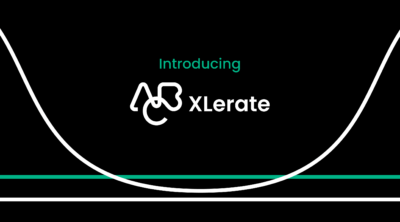The pandemic has totally transformed the fitness industry over the last year. But it’s not just you and your fitness business that has changed; gym members have too, and so have their purchasing behaviors. We know by now that the gyms of the future are hybrid and that when it comes to joining a gym in 2021, people aren’t necessarily looking for the cheapest gym pricing or even the most premium options. Now more than ever, people are looking for convenience, flexibility, and above all, value.
When opening back up, you’ll likely be running onsite and digital membership options. Developing a gym pricing model that reflects the different values within these offerings is essential for success. If your pricing is too low, you could miss out on profits and risk devaluing your services. Price it too high, and you could lose out on more members and money.
Several different factors come into play when determining the pricing for your fitness business. Here, we discuss the different types of gym pricing structure and how you can provide members with great value; online and in-person. We’ll also look at the elements to consider when setting your prices to ensure you have a scalable model that drives growth and revenue for your gym.
Skip ahead to:
- What are the Different Types of Gym Pricing Models?
- How Many Members Do You Need to Succeed?
- 9 Points to Consider When Setting Your Studio or Gym’s Price
What are the Different Types of Gym Pricing Models?
There are different gym pricing options to choose from, and depending on the type of business you have; your needs will vary.
Your payment system can heavily influence the customer experience, so make sure your payment provider can implement the right pricing model for your business. Here are 3 common types of pricing models to consider when setting the price for your hybrid fitness business.
1. Monthly Memberships
This is one of the most traditional payment structures and is used in a variety of industries. In this model, clients pay a fixed monthly payment to gain access to your facility and services. You have the option to provide rolling monthly packages, 12-month or multi-year contracts. It’s a simple model for both you and your members.
Clients know exactly what they pay each month, and it comes with the added benefit of consistent revenue. This model allows you to calculate how many new members you need to hit revenue targets. Although a basic model, it is flexible and a popular way to pay for fitness services.
For members who want to participate in onsite and digital classes, pricing and packaging a monthly membership that incorporates flexible access to both is an excellent way to provide value. For instance, if you also offer pay-as-you-go options, members will know what each session is worth. Let’s say each of your onsite classes are $10, and the digital equivalent is $7. In this example, we’ll assume a member wants the flexibility to attend both types of classes around 4-5 times a week.
Monthly, this could work out at up to $270 for the client. However, in the eyes of a member, if you offer a Monthly Flex Membership combining a mix of 4-5 onsite/online classes per week for $150, their perceived value of the offer is much higher.
Naturally, with this structure, you would need to decide exactly how many onsite classes per week people on this plan can access: you don’t want to create a situation where the members paying more for onsite-only access are unable to book into a class.
Pay-as-you-go and Class Packages
Being able to pay-as-you-go or book class packages is very attractive to certain clients. If you run a Bootcamp business, clients may want to book a block of 10 classes at a time or pay as they go so that they can try it out before committing. This form of payment can also be a powerful way to attract new members.
A monthly membership can be daunting for some, and by offering another payment option, you can reach a new level of potential clients. As this payment model doesn’t provide consistent income, it’s often recommended to combine it with a more stable model such as monthly memberships, like in our example above.
Dynamic Pricing
Dynamic pricing looks at setting prices in a new, fresh way. This pricing model considers the demand for the class, the time, classes and determines what the best price should be. The idea is that if all classes are priced the same, then the sessions at the best times, like before and after work hours, will be the most filled out. This can lead to overcrowded onsite classes.
Offering lower prices for off-peak classes might help fill out classes that tend to be emptier. Your 6 pm yoga class, Monday to Friday, may be packed at $30 per person, while the same class earlier in the day could be less than half-filled. By lowering your yoga class to $20 at off-peak, you might be able to reach additional customers and increase your revenue. Equally, your online yoga classes can come in at this lower price point – there’s no need for regid capacity limits online!
How Many Members Do You Need to Succeed?
Once you’ve worked out the gym pricing that’s going to work best for your business, you’ll need to identify a base level for your active memberships. By this, we mean: across your different pricing and structures (onsite, online, combined) how many of each will you need to turn a profit?
Onsite Capacity
Chris Cooper is a gym owner and the author of the best-selling fitness business books Two-Brain Business and Two Brain Business 2.0. He is also the founder of the business mentorship program of the same name, which you can find at www.twobrain.com. In a recent article, Chris explains how you can build a great life and a thriving business with only 150 clients:
“To build a successful career, start with 150 and work backward.”
Chris Cooper, Two Brain Business
The article highlights Robin Dunbar’s research on interpersonal relationships and explains why 150 is a great target, with data from Two Brain Business to support this figure. Research shows that the most profitable gyms weren’t the gyms with the most members all the time:
“Most of the time, they were profitable with 50 clients, then they scaled to 150 while maintaining their profitability. While “Dunbar’s number” isn’t always exactly 150 in the microgym business, it’s a great starting point when you’re pricing your service, scheduling your day, and trying to market to the right people.”
150 clients may not be the exact number your business needs, but applying Chris’s process will help you work out the perfect number for your onsite clients. Your digital memberships can help to support and bolster these numbers moving forward.
9 Points to Consider When Setting Your Studio or Gym’s Price
When you’re setting your studio or gym’s price, there are a few points that you need to take into consideration. By looking at your long-term vision, goals and mission, you can work backward to determine the right price for your services.
1. Research the Competition
Before setting a fixed price, check out what your local competition charges. This is an essential part of the planning stage. Do some research on your competition and find out how much they are charging. If a similar place charges $150 per month, you’re not going to charge $70. And if you underprice, you’ll be doing yourself a disservice as well as the fitness community. If your competition is making a profit at a specific price point, you can do it too.
The Top 10 Barriers
Slowing Your Fitness
Business Growth
Discover more Plus, when it comes to pricing and packaging a hybrid offering, you can use your online service to add even more value for members. Well cover this in more detail further on in the article.
2. Break Your Fitness Offerings into Different Levels
Unless you’re a gigantic gym chain that has one single price for every member, the likelihood is that you will need to figure out different prices for different services. There’s a fine line between providing a valuable service and a price that suits your target audience. You might want to offer prices by time, clientele, class types, and of course – whether they’ll be in-person or onsite.
There’s no longer a one-size-fits-all approach to pricing. If you offer fitness classes, you might want to consider a weekly class pass and a 3-day class pass to include every possible member. Some clubs restrict access to certain services and break memberships down through this. For example, members would only have access to tennis facilities or swim only – or onsite/online only access.
3. Provide Exceptional Value
As we mentioned in the introduction, now more than ever, consumers are looking for value when it comes to their purchasing decisions. Consumers are happy to pay more for a service that addresses their needs and provides value beyond the initial purchase. Whether you’re charging $100 or $200 dollars for a monthly membership, you need to put yourself in your members shoes and ask “What am I actually getting for that price? What’s the real value here?”
When various parts of the world were forced into the first lockdown restrictions last year, we spoke with Jack Thomas, owner of BASE and host of the Fitness Business Asia Podcast. Like many fitness entrepreneurs, Jack quickly adapted to run the business online. In this episode, he shares some great advice on delivering more value with your digital offering, and how to price and package your services. He points out that your pricing and your value go hand in hand; “It really puts you in a different mindset – you immediately have an obligation to deliver a great level of service once you’re charging for it.”
When deciding on your gym pricing structure, remember that members aren’t just paying for a workout, because you provide value beyond exercise alone. It’s your one on one expertise, community, and the regular check-ins that keep everyone accountable and on track.
Like the example we used when outlining different types of gym memberships, think about the ways you can create different values within your pricing. We’ve outlined some quick points to condsier below, and we’ll explore this in more detail in the next section.
- More comprehensive packages for the same price
- Extended schedules
- 1:1 guidance – what can you or your trainers provide from your area of expertise?
- Accountability: progress tracking, 1:1 check-ins, call-outs in classes
4. Get Creative With Upsell Strategies
Upsell offers might not play a play a role in your gym pricing when it comes to new members, but when it comes to your existing ones, they’re an excellent way to drive additional revenue for your business. Uber Shape Australia is a great example of this in action: The gym has mastered the art of the upsell with its 8-week challenge; an easy purchase that members can buy directly through the online store.
“I use the store for the 8-week challenge. Members will go straight in and “buy now” because it’s easy.”
The latest run of the challenge had a 100% retention rate from start to finish, which brings us on to the final section on what makes, and keeps a gym profitable.
5. Structure Your Membership Options
Your membership options will depend on the type of services you offer, your clients and business. When thinking about pricing, consider the services that you offer. Whether it’s budget, mid-tier or high-end, the type of services you offer will help dictate the pricing. A budget gym might offer essential gym equipment and changing facilities but no frills. With minimum staff members, a high volume of members at a relatively low membership cost provides a healthy profit margin. The bigger the gym, the lower your price can be as you can get more people through the door.
It’s common for memberships to add packages and add-ons. These packages can vary from personal training VIP sessions to discounts on long-term contracts. Brands such as SoulCycle who have innovated indoor cycling go against traditional payment options and don’t offer memberships at all. Instead, you can buy as many or few classes you like for $36 per class plus shoe rental. This amount can quickly add up yet it doesn’t deter members from coming back again and again. SoulCycle position themselves as a lifestyle brand rather than just another workout, creating a sense of community.
6. Understand Your Target Members
To price your fitness business right, you need to fully understand your target members. How often do they like to workout? How has moving online impacted their exercise routines? How much are they prepared to pay for your services? During your business planning stage, you would have already carried out a considerable amount of research on your target audience and potential clients. Now that member expectations have changed, you may want to carry out some additional research, comparing it to the information you’ve collected previously while you’re trying to figure out the best price for your services.
Whether you’re planning on reopening your business or are looking to re-evaluate your pricing structure, focusing on your clients is very important. It’s useful to understand how often clients are using your gym or studio. If a high percentage of clients use your online services at least three times a week, you need to do the math to find out how much you need to charge to turn a profit without overcharging and forcing them to go to your competition when you reopen.
7. Pricing Model Supported by Gym Management Software
Your gym management software is at the heart of your processes. It’s what streamlines your admin and makes managing a fitness business just that bit easier. Your gym management software is responsible for a number of jobs such as tracking and setting up payments, manage class bookings, offer insights and more. Essential features to look out for in your gym management software include a streamlined dashboard and membership management. Find out more about how to choose the best gym management software for your fitness business.
When you’re deciding on the payment model, make sure it’s supported by your gym management software. If it’s not supported by the software you will have to either change your system which takes a considerable amount of time and effort or pick a different pricing model. Some systems may support a pay-as-you-go model but when you start to add in a selection of packages, the system might have a tough time keeping up with the accounting. This will eventually lead to a massive headache for you.
8. Keep Your Profit Margins in Mind
By choosing the right payment model, you will offer a service at a price your customers are willing to pay for. In order to be successful and continue to innovate, you need to be profitable. When considering different pricing models or a combination of a few, keep your profit margins in mind.
This means understanding every cost of your business. You should know how much it costs for you to offer your services and what each client costs. Think about instructor costs, rent, equipment cost and how much you need to charge to make a profit. With the correct knowledge, you can price your services well and understand how viable your pricing structure will be.
9. Experiment!
Regardless of what price you land on for your services, it doesn’t mean you can’t experiment. It might take a few attempts to get your optimal pricing. Don’t experiment blindly, track and analyze data especially in the first few months of operation to get the right pricing model. Look at the reports from your gym management software so that you can make data-driven decisions that are based on results.
Experiment with promotions, pricing models, and discount options. After a few months, you should be able to see what the most popular option is and pinpoint where you need to make changes. If the pricing structure is difficult to understand or your customers are finding it hard to use, all these things will impact the customer experience, potentially harming your client base and profits.
In Summary
Potential members need more than a one-size-fits-all approach and depending on the type of business you have, membership prices needs can differ massively; especially in our new hybrid fitness world.
How you determine the right price for your business requires strategy and thorough planning. The perfect pricing model for your fitness business may be a combination of payment options and onsite and online offerings. By effectively pricing your business you can target potential clients, increase revenue and grow your brand.















